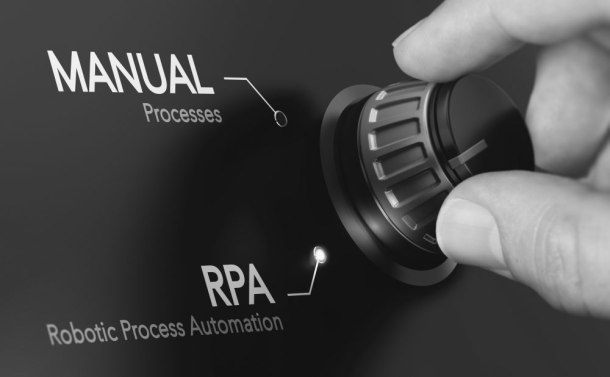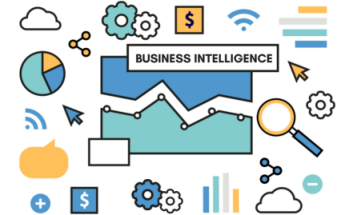
RPA (Robotic Process Automation) is an emerging trend in Information Technology. RA is an IT Business Process Automation based on Metaphorical Software Robots (also called BOT). RPA is using Software with Artificial intelligence, Machine Learning and Business Process knowledge to handle high volume and repetitive jobs. RPA technology allows people to focus on the core work that makes their companies grow and achieve the ultimate objectives and let BOTs do the rest of the work.

ERP is a category of business control softwares, generally a collection of included programs and applications that an employer uses to manipulate, interpret, keep, collect and analyze statistics from many enterprise activities and processes.
An ERP machine includes core software components, regularly known as modules, that focus on essential enterprise areas, including but not limited to finance and accounting, HR, production, substances control, marketing, consumer relationship management (CRM) and supply chain management. Organizations select which modules to apply, primarily based on which are most crucial to their precise business.

Business Intelligence (BI) refers to technologies, programs and practices for the collection, integration, evaluation, and presentation of enterprise records, in order to guide higher enterprise decision making. Essentially, Business Intelligence systems are statistics-driven Decision Support Systems (DSS). Business Intelligence is sometimes used interchangeably with briefing books, file and question equipment and govt statistics structures.
Business intelligence (BI) leverages software program and services to convert information into actionable insights that inform an agency’s strategic and tactical business selections. BI equipment access and analyze information sets and present analytical findings in reviews, summaries, dashboards, graphs, charts and maps to offer customers with detailed intelligence about the country of the commercial enterprise.
Although enterprise intelligence does not tell business customers what to do or what will show up if they take a positive path, neither is BI completely about generating reports. Rather, BI offers a way for human beings to study information to apprehend developments and derive insights by streamlining the effort had to search for, merge and question the facts necessary to make sound business decisions.

Cyber-security is the practice of protecting computer systems, servers, cell devices, electronic systems, networks, and information from malicious assaults. The term applies in a diffusion of contexts, from enterprise to mobile computing, and may be divided into a few common classes. It's also known as records technology security or electronic statistics safety.
Common techniques attackers use to govern computers or networks include ransomware, adware, worms, viruses and Trojans. Ransomware waits for an opportunity to encrypt all of the person’s statistics and needs fee to return get entry to to the consumer. spyware and Trojans are often used for surreptitious data collection, at the same time as Viruses and worms can self-mirror and harm files or systems. Malicious code often spreads through an unsolicited e mail attachment or pen-drive or valid-searching down load that contains a malware payload.
Electronic safety protocols additionally identifies malware real-time. Many use heuristic and behavioral analysis to display the behavior of a application and its code to guard towards viruses or Trojans that exchange their shape with every execution (polymorphic and metamorphic malware). Security packages can confine probably malicious programs to a digital bubble separate from a person's community to investigate their conduct and learn how to come across new infections.
Security applications hold to evolve new defenses as cyber-security specialists discover new threats and new ways to fight them.

ITIL describes tactics, procedures, tasks, and checklists which aren't agency-particular nor era-specific, but may be carried out by means of an enterprise closer to method, handing over cost, and keeping a minimal level of competency.
ITIL is a widely well-known method to IT Service Management (ITSM), which has been followed by individuals and groups across the globe. ITIL provides a cohesive set of satisfactory practice, drawn from the private and public sectors the world over.
ITIL's applications offer a number of key benefits for the corporation and the professionals.
Over the years, ITIL's credibility and utility became recognized, and in 2005 its practices contributed to and aligned with the ISO/IEC 20000 Service Management general, the first worldwide fashionable for IT service control; it's far primarily based on British well-known BS15000.
ITIL is a collection of e-books, however simply doing a study binge on books may not improve your IT operations. First, you have to need your brain around the concepts and then get workforce buy-in. Getting some IT personnel to adopt new approaches can be like herding cats, however there are tools which could assist.
Copyright © | All Rights Reserved | Powered by Athteaa Solutions